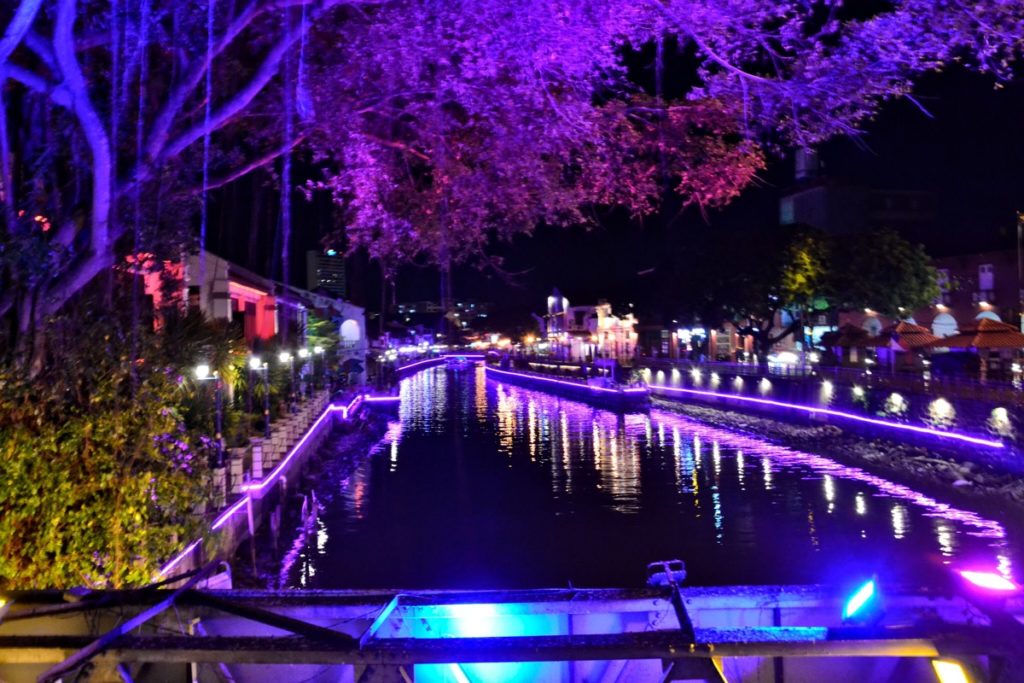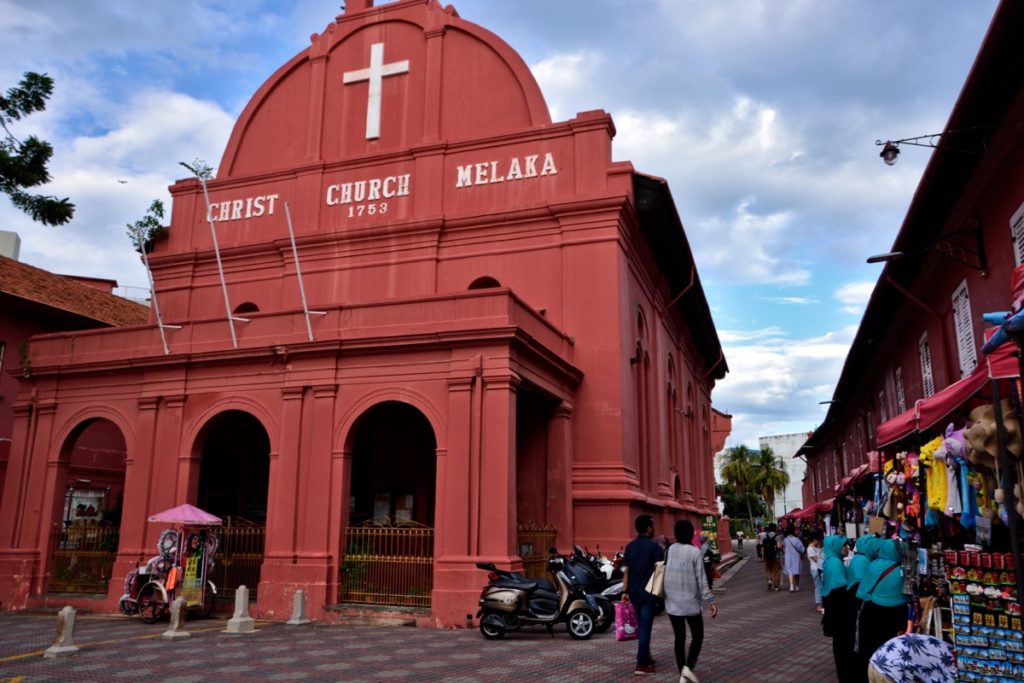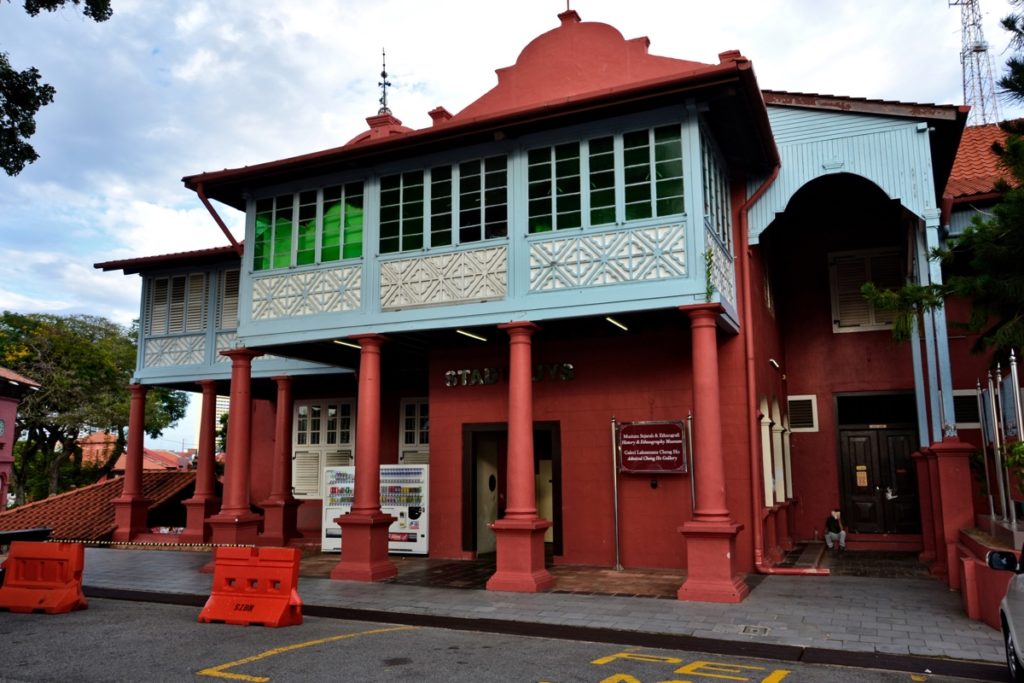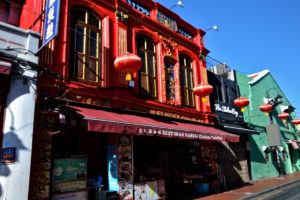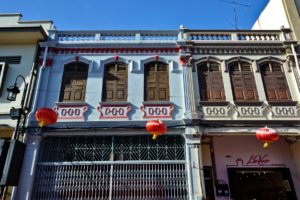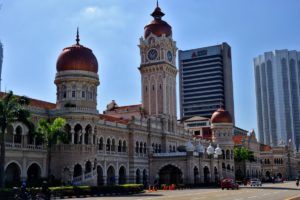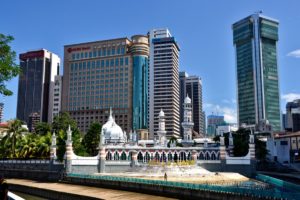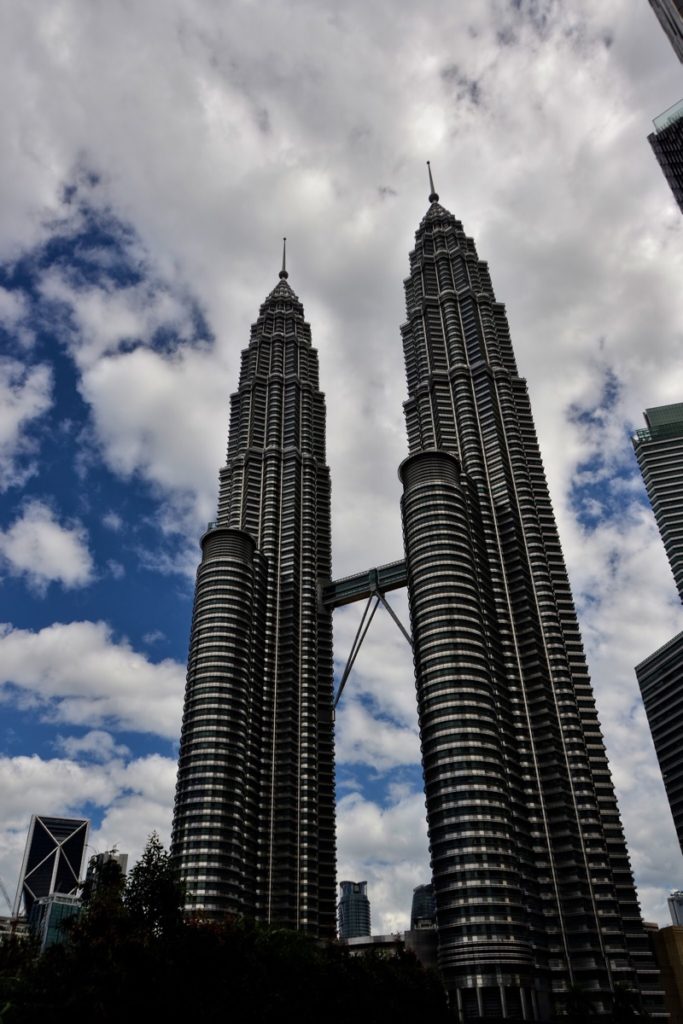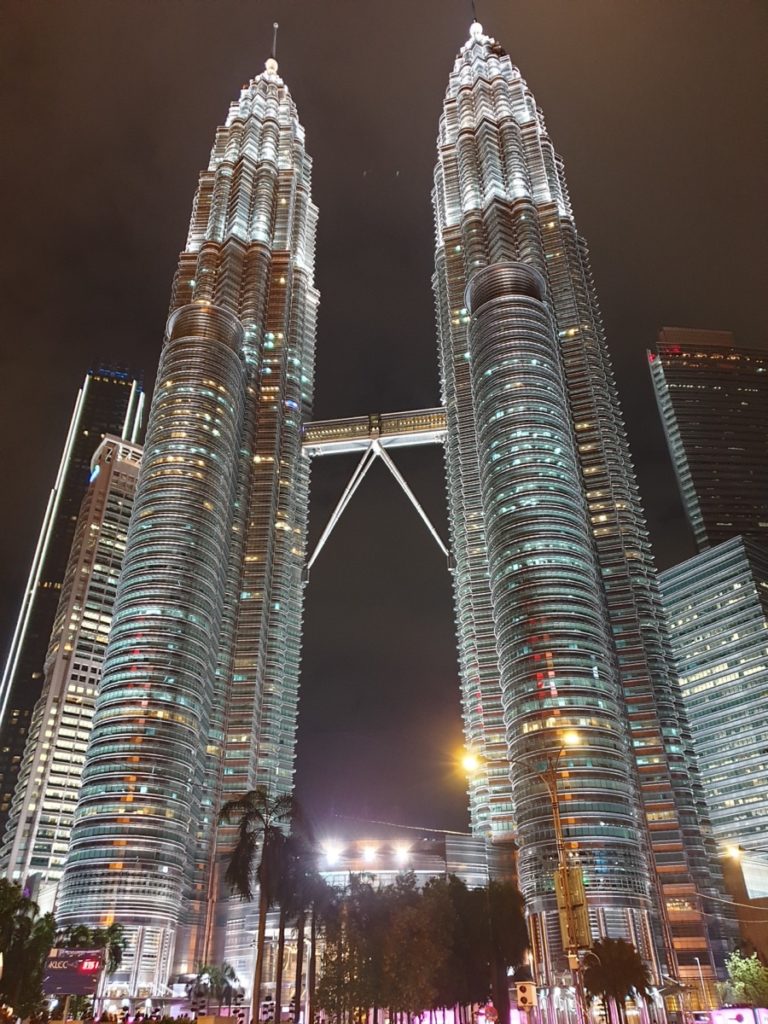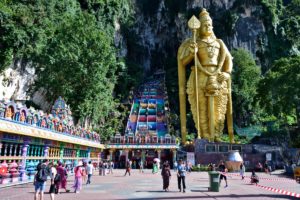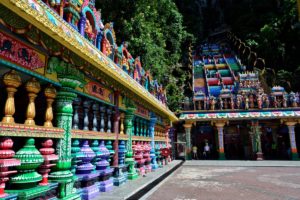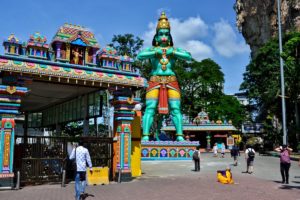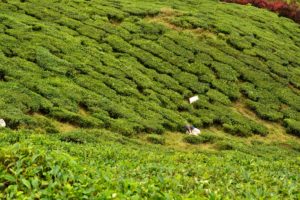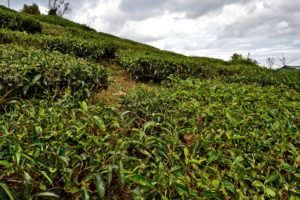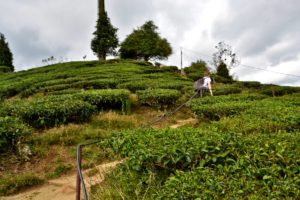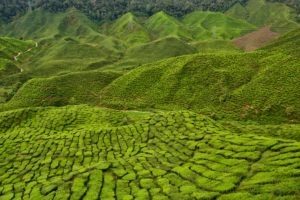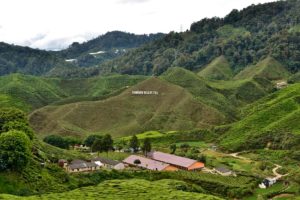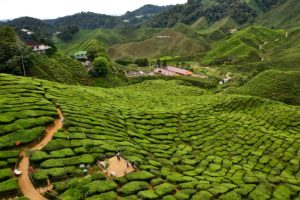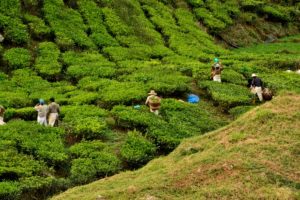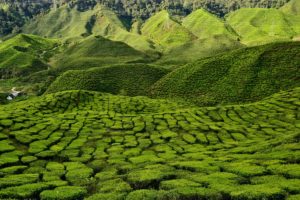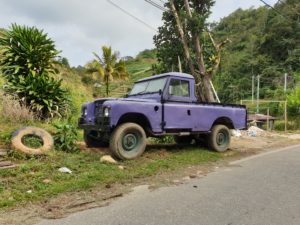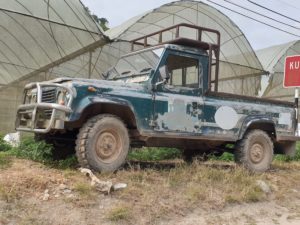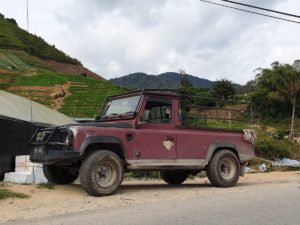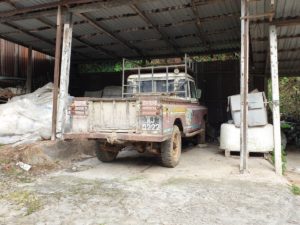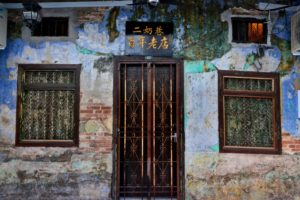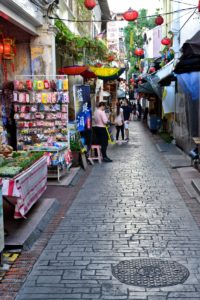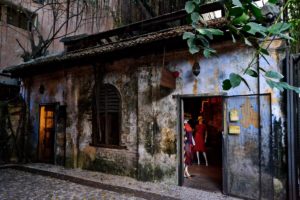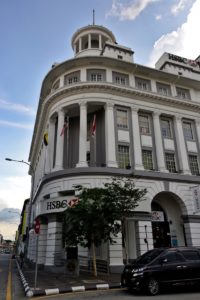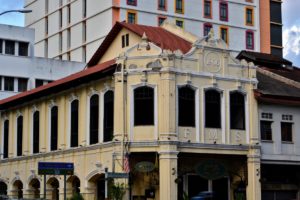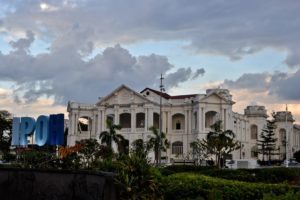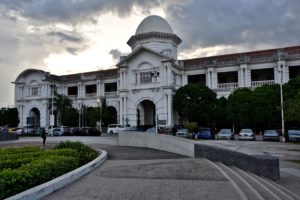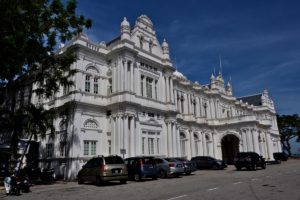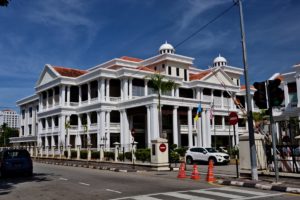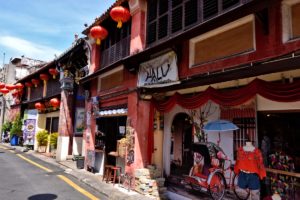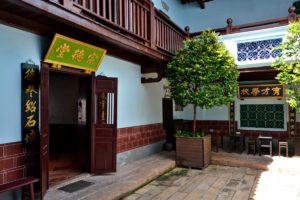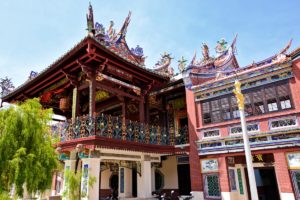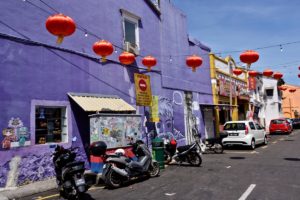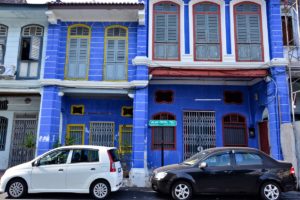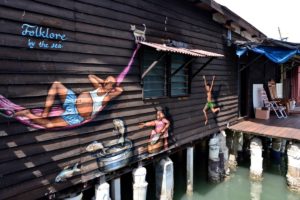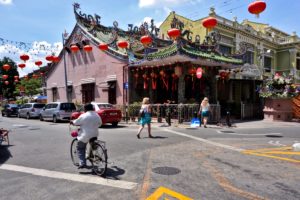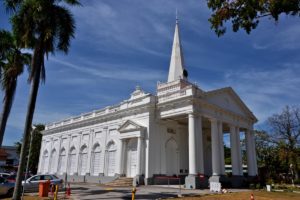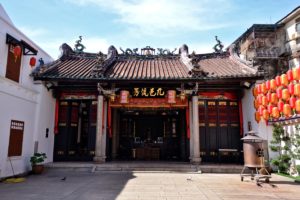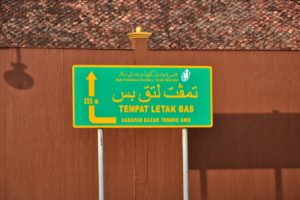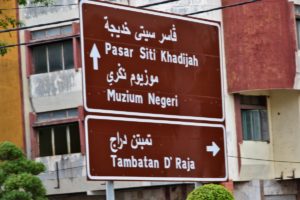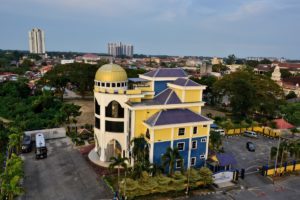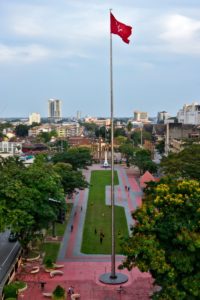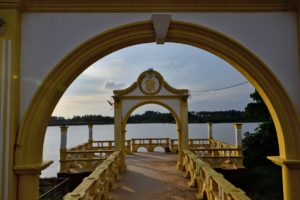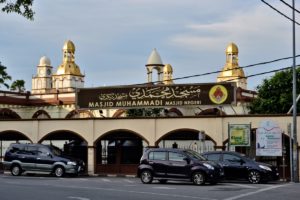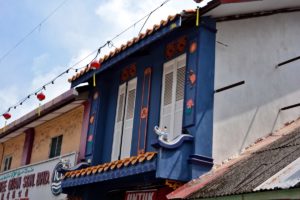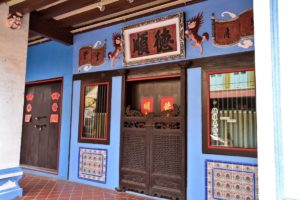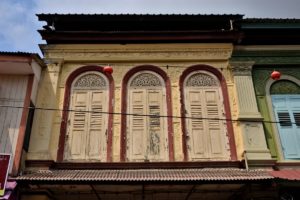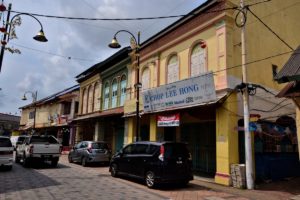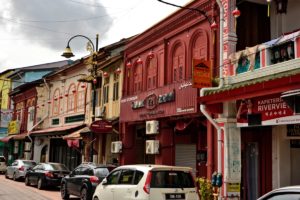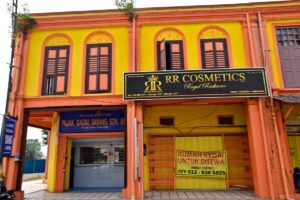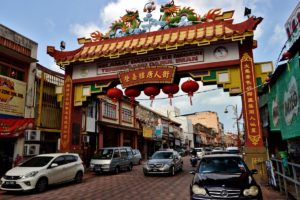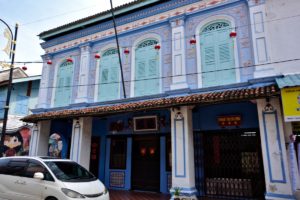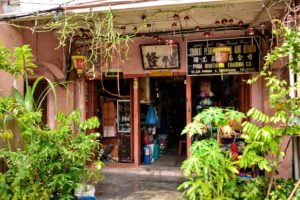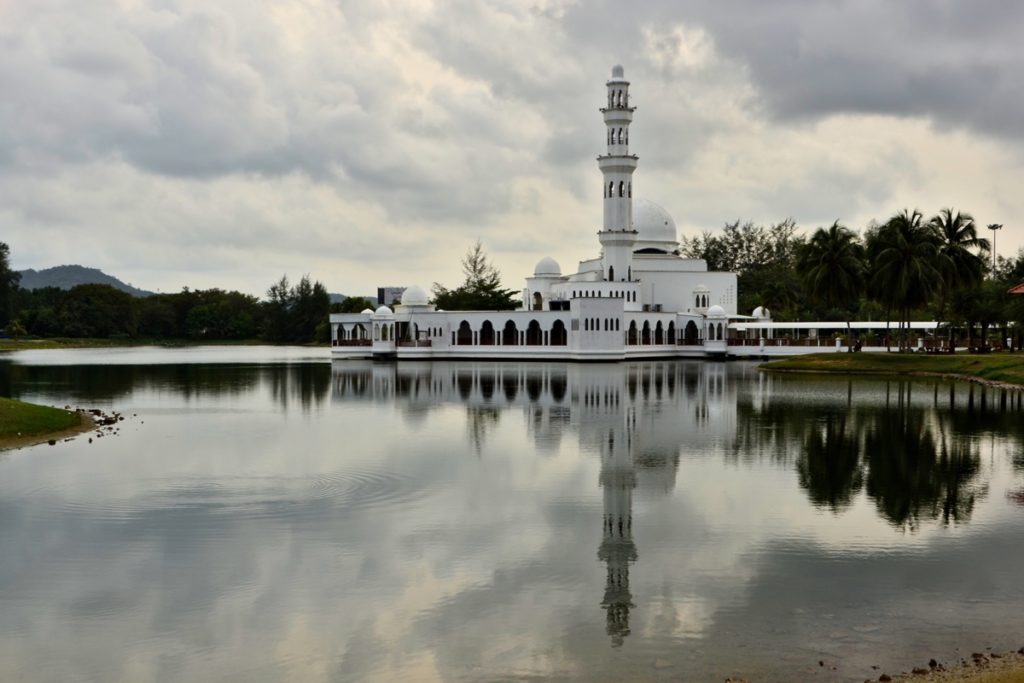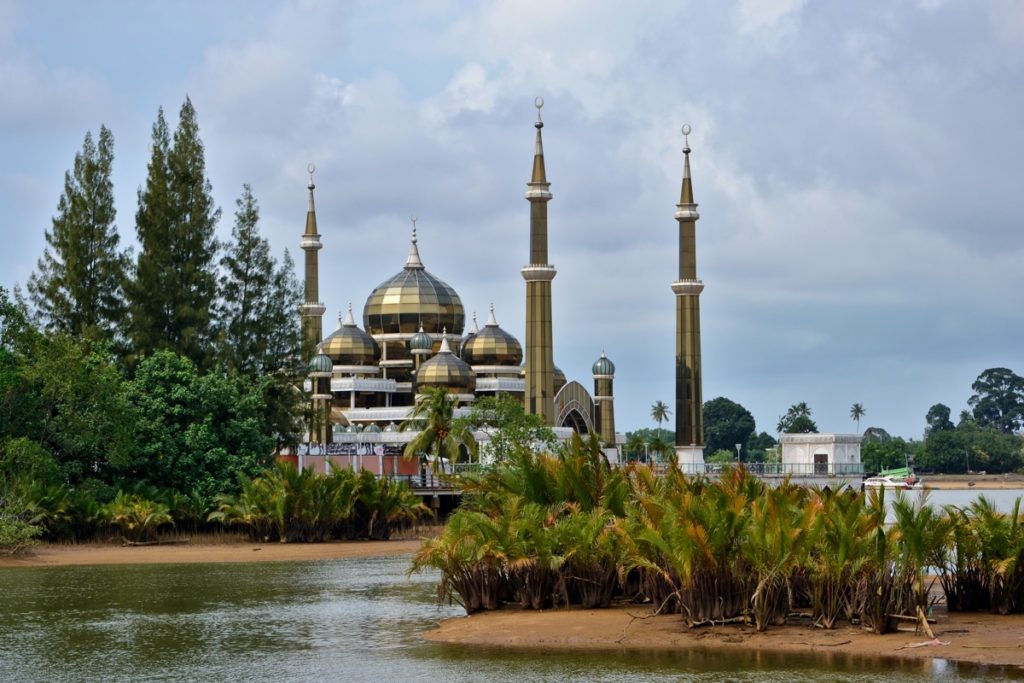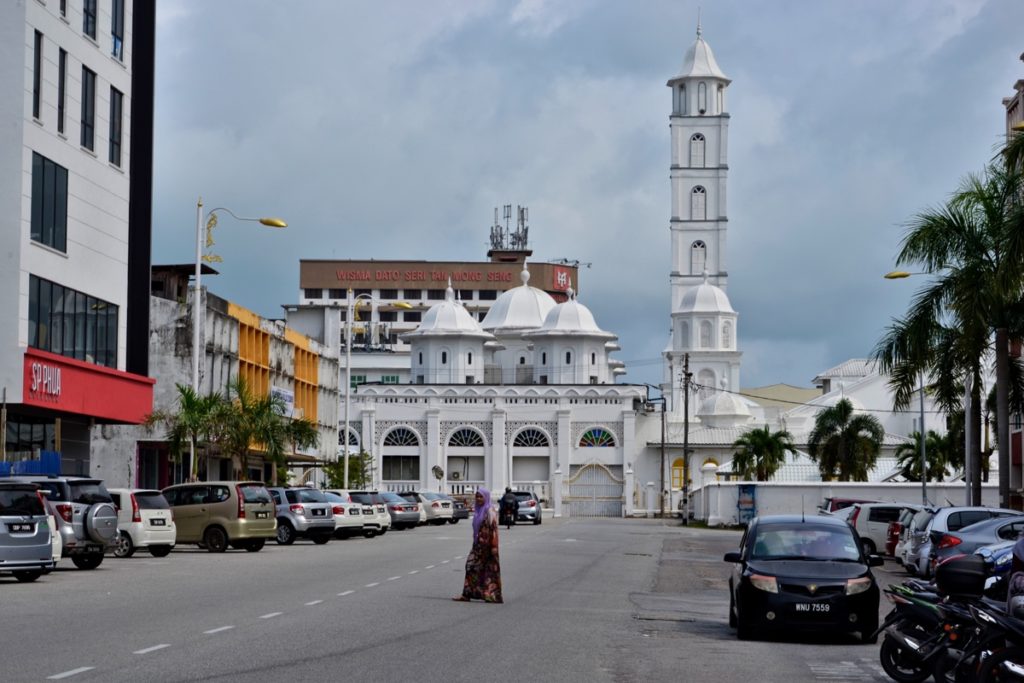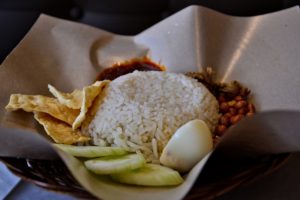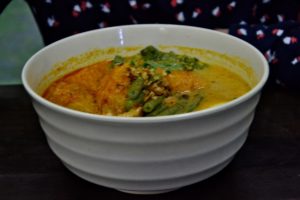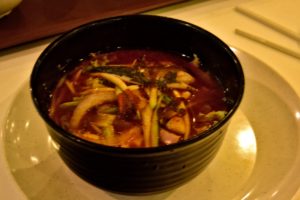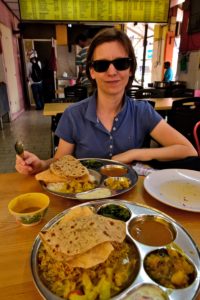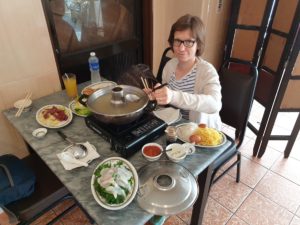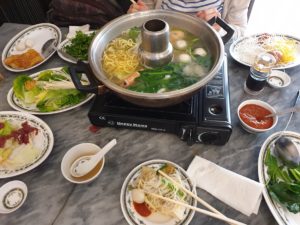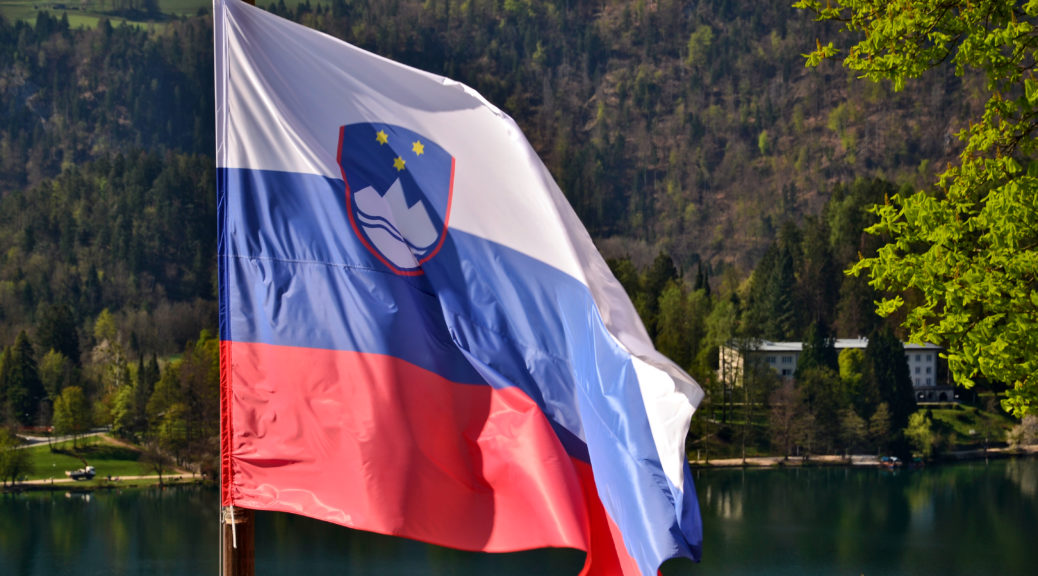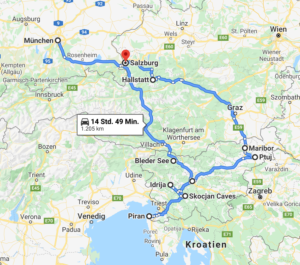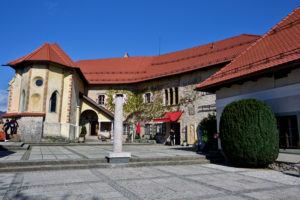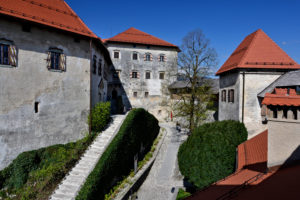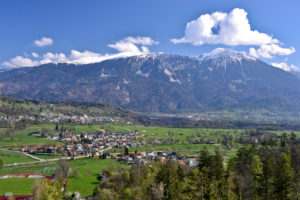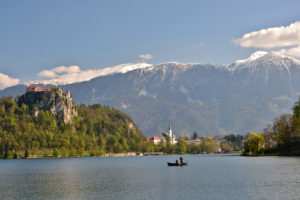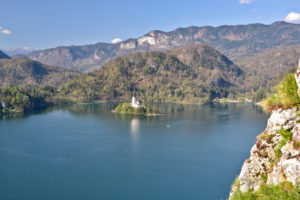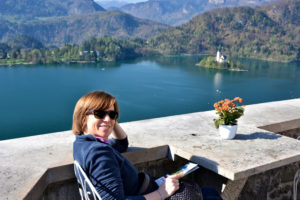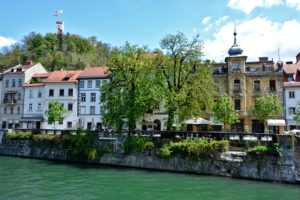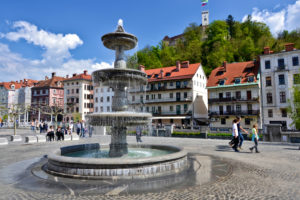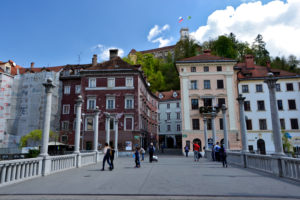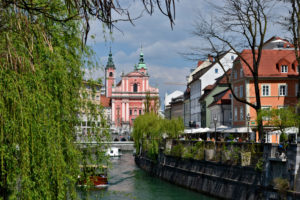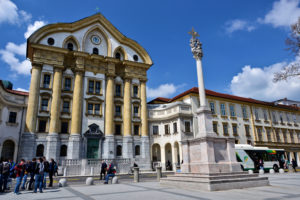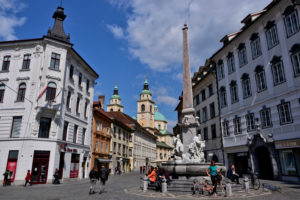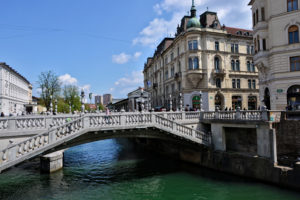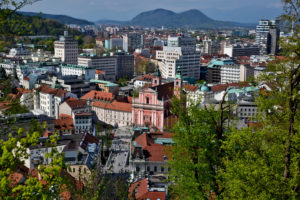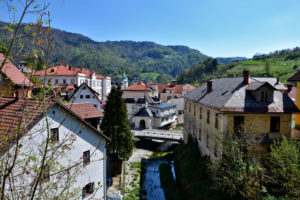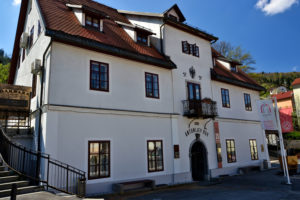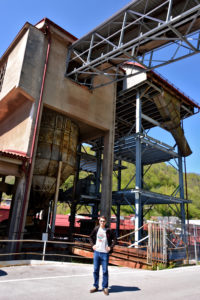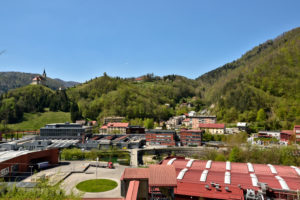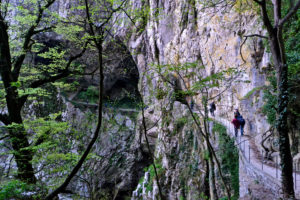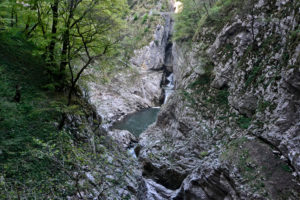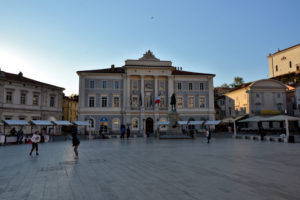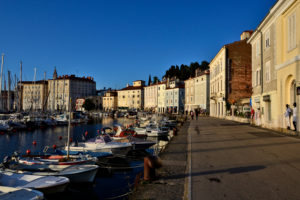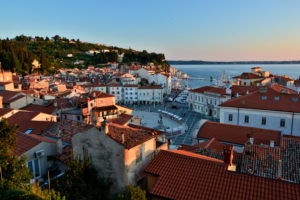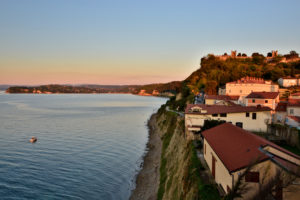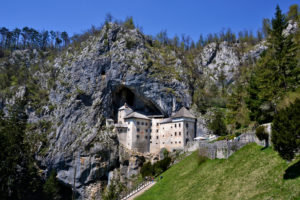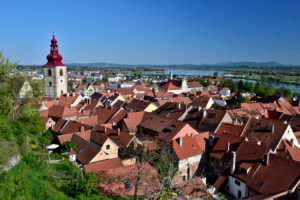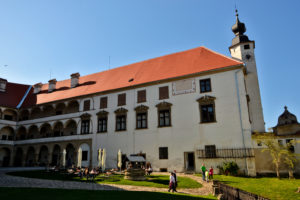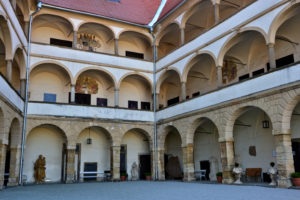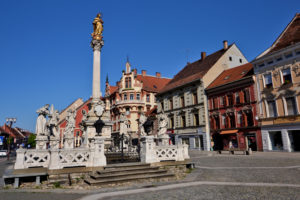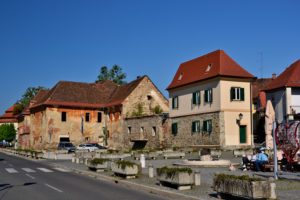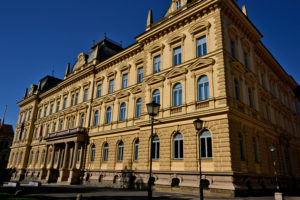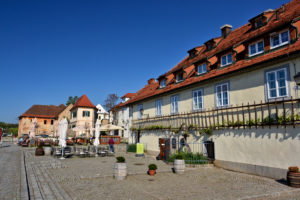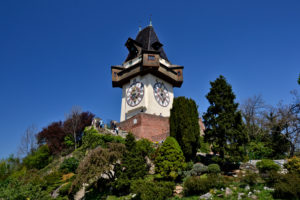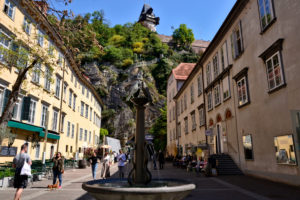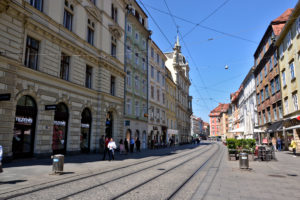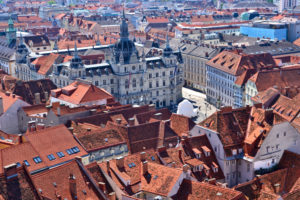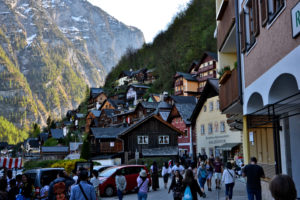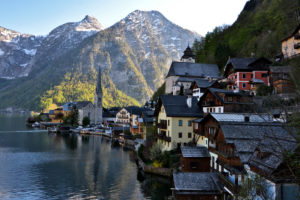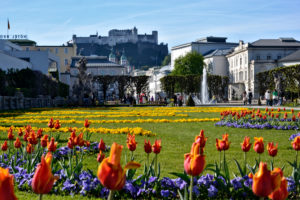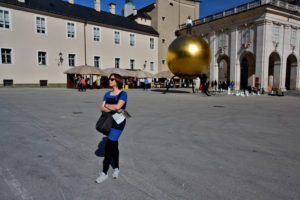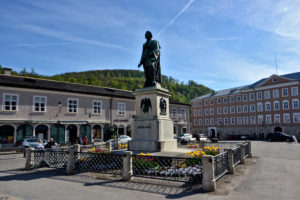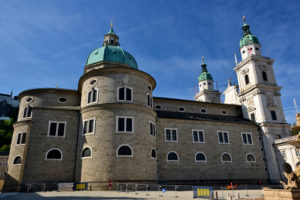Malaysia Travel Tips
Welcome to our travel guide for globetrotters & UNESCO enthusiasts and discover top tips for your next travel to Malaysia – the country with the various cultures and ethics: Malay culture, a Chinese culture, an Indian culture, a Eurasian culture, along with the cultures of the indigenous groups of the peninsula.
Content
Tips for planning your journey
Our route through Malaysia (by bus and rental car)Our highlights in Malaysia
Melaka (UNESCO World Heritage)
Kuala Lumpur
Cameron Highlands
Lenggong Tal (UNESCO World Heritage)
Ipoh
Penang (UNESCO World Heritage)
Kota Bharu
Kuala Terengganu
Unsere Empfehlungen
Our favorite dishes in Malaysis
Our recommendations about travel guides, cooking books and further literature
We spent two weeks in the western part of Malaysia (Peninsula Malaysia) in January 2020, starting in Singapore, crossing major cities and places like Melaka, Kuala Lumpur, Batu Caves, Cameron Highlands, Penang, Kota Bharu and Kuala Terengganu. Above all, we have also visited all UNESCO world heritage sites of the island including Melaka and George Town (Historic Cities of the Straits of Malacca) and the Archaeological Heritage of the Lenggong Valley.
This Malaysia travel guide will help you plan your dream trip by giving you all the tips, tricks, and travel hacks you need.
How to get from Singapore to Malaysia
You can reach Kuala Lumpur the capital of Malaysia from almost of European capitals with a non-stop direct flight. But it also possible to have a stopover in Dubai, Muscat, Doha or Bangkok etc.
Entering Malaysia from Singapore
We have entered Malaysia by foot from Singapore via the woodlands Immigration and arrived in Johar Baroh where we have rented a car. From Singapore there are regular buses starting at the central bus station (close to little India) going to the immigration. The tickets cost around 3 Singapore dollar and you can even pay with the MRT card. Since we started our trip on a Saturday morning the immigration was quite busy what means we were standing for around 1 hour in the queue.
Our route through Malaysia
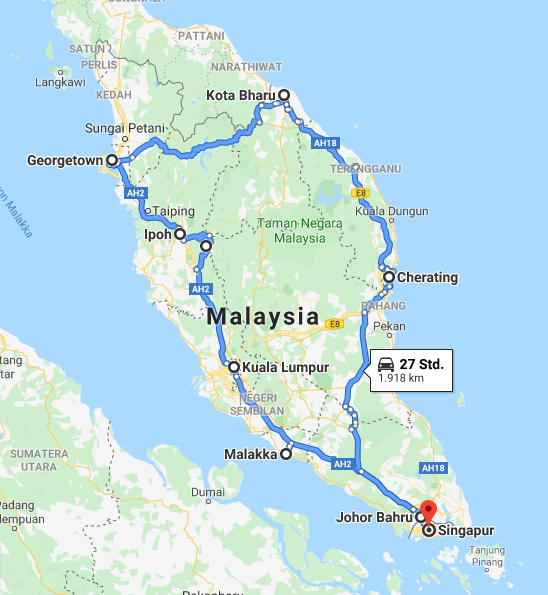
Our experience of self driving in Malaysia
Car rental companies
All well-known car rental company are available in each big city in Malaysia. We decided to rent a car at Europcar that is just in a walking-distance from the immigration center in Johar Bahu in a hotel.
Costs for a rental car in Malaysia
Since we like to explore the countries by ourselves we decided to rent a car. Compared to other countries we already visited, renting a car in Malaysia is quite cheap. With approx. 25 Euro per day incl. insurance and two drivers, we got a typical Malaysian car: a proton. Proton stands for Perusahaan Otomobil Nasional which means translated national automotive company. Proton was founded in 1983 by the prime minister as a joint venture of the heavy industry in Malaysia and Mitsubishi. Now the chines car manufacturer Geely is also invested.
The streets are in a very good condition, especially when you take the toll roads. To pass the toll gates a so-called Touch & Go card is required. The card can be bought in shell gas stations and needs to be charged with money. For our round trip we required around 120 MYR (approx. 30 Euro). Malaysians are careful drivers, almost no soundings of horns. Waiting at red lights means being patient since red lights can take up to more than 100 seconds. Never experienced so long red-light phases. Hence, we understand why everybody is using the AC in their cars.
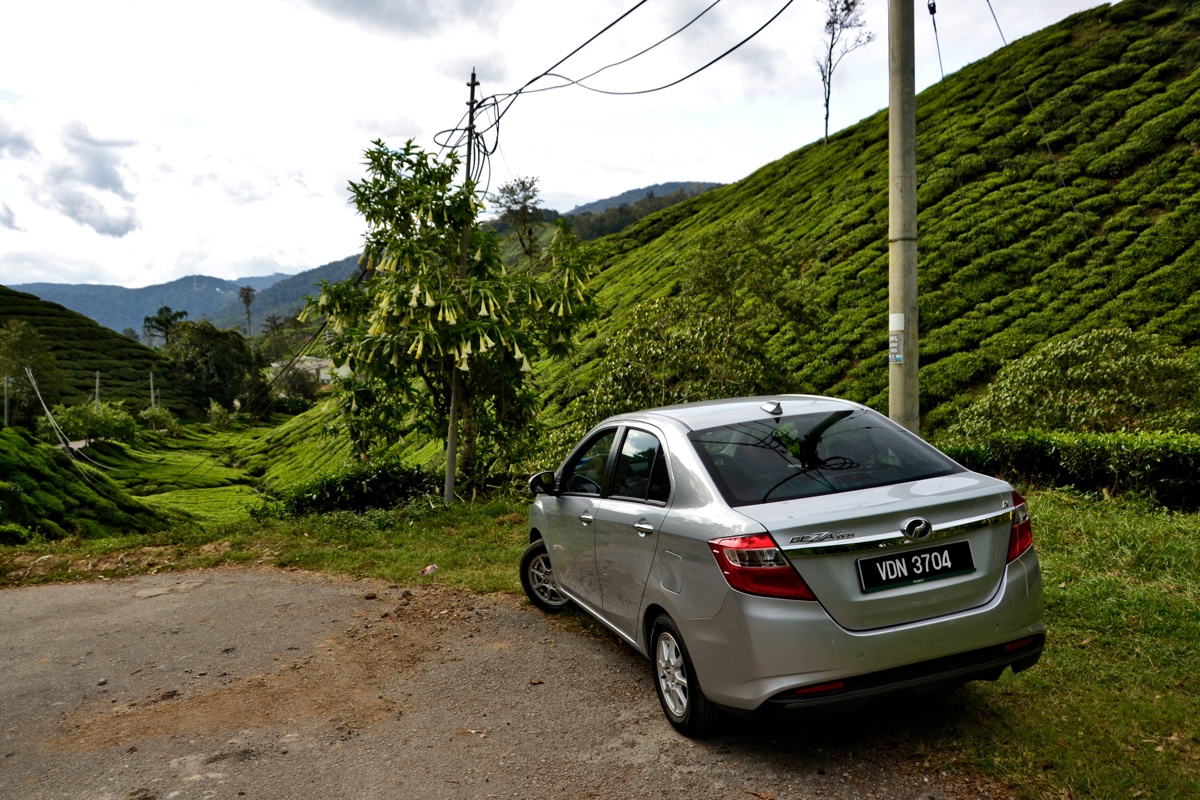
Ultimate travel tips for Malaysia
Melaka / Melakka
Our first stop was Melaka / Melakka – a UNESCO world heritage site. We spent one day to explore the colonial sites in the city center. The main attractions are within a walking distance. The different cultures and especially the influence form the Dutch, Portuguese and the English are visible in the city. Our favorites sites in the city center are:
1. Walk along the Melaka River, especially in the night when the trees around are illuminated.
2. The red place contains the main colonial sights. All buildings around the place are painted in red since the beginning of 20th century. The oldest Dutch building in Southeast Asia is the Stadthuys that was built based on the city hall in the hometown of the sailors. Together with the Christ Church and the clock tower in the middle of the place show the outstanding architecture. The place is very crowded but it is worth taking the time to walk around and also climb up the hill to St. Paul to enjoy the view from above. However, the only annoying thing are the colorful and trashy rickshaws with earsplitting sounds.
3. Walk through the Jonker Street and Jalan Tun Tan Cheng Look for the beautiful houses. Preferable is a morning walk before the market at Jonker Street starts to have a view to the colonial houses. The houses are built in the typical Malaysian style with two levels where the second level overstates the first to have a shadowed and dry walk-way. Certainly, you should not miss Chee’s House (Chee Mansion) in the honor of the first chairman of the Overseas Chinese Banking Cooperation (OCBC).
Travel tips for Kuala Lumpur (KL)
Our next stop was the capital and the biggest city of Malaysia: Kuala Lumpur (KL). KL offers so many sights. However, since we only spent two days in KL we have only visited the following sights.
Merdeka Square in Kuala Lumpur
The most impressive of KL for us was the ancient city around the Dataran Merdeka Square where the independence has been declared. With all the surrounding beautiful buildings like the Sultan Abdul Samad Building and the clock tower it feels like a transformation to former years.
Petronas Towers
KL’s well-known sign are the Petronas Towers – still world’s tallest twin towers with 88 levels. The towers are connected via a sky bridge at level 41 and 42. visits are possible up to level 86. The Petronas Towers were in 1996 with a height of 451,9 meters the highest buildings in the world. In the evenings there shall be a light show between 8 and 9 pm however, the evening we were visiting the Petronas Towers there was none.
Botanical Garden
Unfortunately, at the time of our visit in January 2020, the Hibiscus and Orchid Gardens inside the botanical garden were closed for renovation. We heard that the gardens will be closed at least until September 2020. However, the deer garden is open but with only a few deers currently living in the garden.
Batu Caves
Just around 12 km in the North of KL near the highway, lies a must-see. The Batu Caves with its impressive around 42 meters high golden statue of god Murugan – son of Shiva and Parvati. 272 colorful steps lead to temples inside the limestone caves. During the walking up, please take care of your water bottles due to the monkeys all around. We have even seen that one monkey was steeling one shoe from a woman just wanted to relax on the stairs.
Cameron Highlands
From Batu caves we continued our trip to a cooler area: Cameron Highlands. Impressive to see such large tea estates with an incredible number of different green colors. Also, seeing and learning about the way tea is produced is very interesting. Certainly, for us this was one of the highlights on our trip. We first visited BOH Tea Estate.
On the next day we were walking around the central city Tanah Rata of Cameron Highlands and started with another tea tasting at Cameron Valley Tea Estate. But unbelievable how bad the touristic centers of the Cameron Highlands are with it’s huge hotels…
Finally, we bought a lot of tea on both factories and will think of this vacation with every cup of tea enjoying back home.
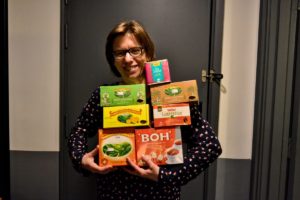
Cameron Highlands has with about 7.000 Land Rovers the highest concentration of these legendary off-road vehicles in the world. They can be easily repaired and have been left by the British. Some examples we have seen already look like antique cars.
Lenggong Valley
After saying good by to the Cameron Highlands, we were heading to our next UNESCO world heritage site, officially called the Archaeological Heritage of the Lenggong Valley. Probably not one of our UNESCO highlights, the site consists of some caves and the archaeological museum in the village of Kota Tampan. Its highlight is the prehistoric skeleton of the Perak Man who was found in 1990 in the cave site in Gua Gunung Runtuh. The Perak Man lived 11,000 years ago and his ancestors had settled in the Lenggong Valley after they migrated from Africa, crossing Middle East and finally arriving in South Asia.
Also, we learned that you can access the caves after arranging an appointment with the museum. However, not being the biggest fans of prehistoric sites, we enjoyed a quick picnic at the museum’s parking before finally navigating to our next travel destination.
Ipoh
Leaving the Lenggong Valley, we recommend stopping for a day on Ipoh. It is a good impression of what you will see in Penang / Georgetown but not so crowded. It still looks very authentic and we recommend the following heritage walk:
1. Jalan Bijeh Timah
First of all, start at Jalan Bijeh Timah with the Han Chin Pet Soo that was founded as a miner’s club in 1929. Even before is was used by the hakka-Chinese miner’s for gambling and smoking.
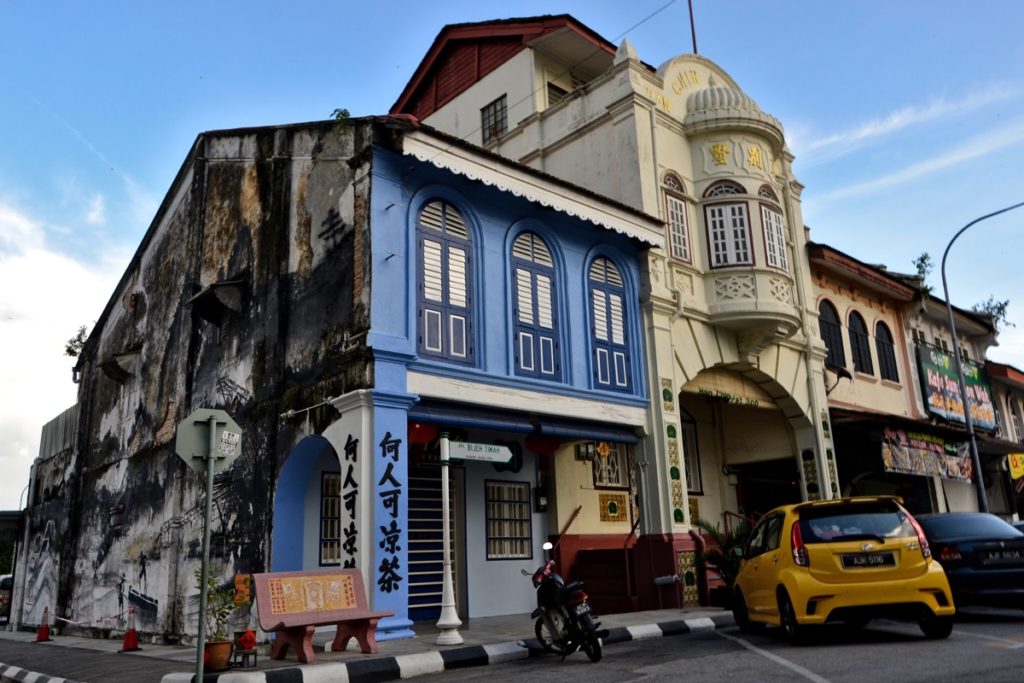
2. Panglima Lane
Afterwards, continue through the Panglima Lane better known as Concurbine Lane. The name is based on the story that due to a fire in 1892 three new streets were built for the wives of a rich tin baron. Today there a several souvenir shops and art galleries that are worth visiting.
3. Jalan Sultan Yussuf
In the Jalan Sultan Yussuf (Belfield Street) several historic bank buildings are located and further beautiful buildings around the park Ipoh Pedang. The Hongkong and Shanghai Banking Corporation first opened an office in 1910 in a modest wooden building provided by the government. The FMS building is said to be the oldest restaurant in Malaysia which begin operating on its current site in 1923.
4. High Court & Railway Station
The area around the central station show the richness the colonial area with its High Court and the clock tower that was built in 1909. The railway station is a perfect example of colonial architecture and was built as a hotel and looks similar to the railway station in Kuala Lumpur. On the fore court is planted an Ipoh tree that has given the name to the city. It looks like a rubber plant at the first sight however the poisonous sub used for darts was obtained by the trees.
5. Jalan Dato Maharajalela
Finally, following the Jalan Dato Maharajalela (Station Road), we passed the impressive Standard Charted Building form 1924. At that time Standard Chartered Bank was the leading bank for the tin industry and the major bank for the Straits Trading Company, a big tin-ore exporter, whose former office lies directly across the street. This building is now occupied by OCBC Bank.
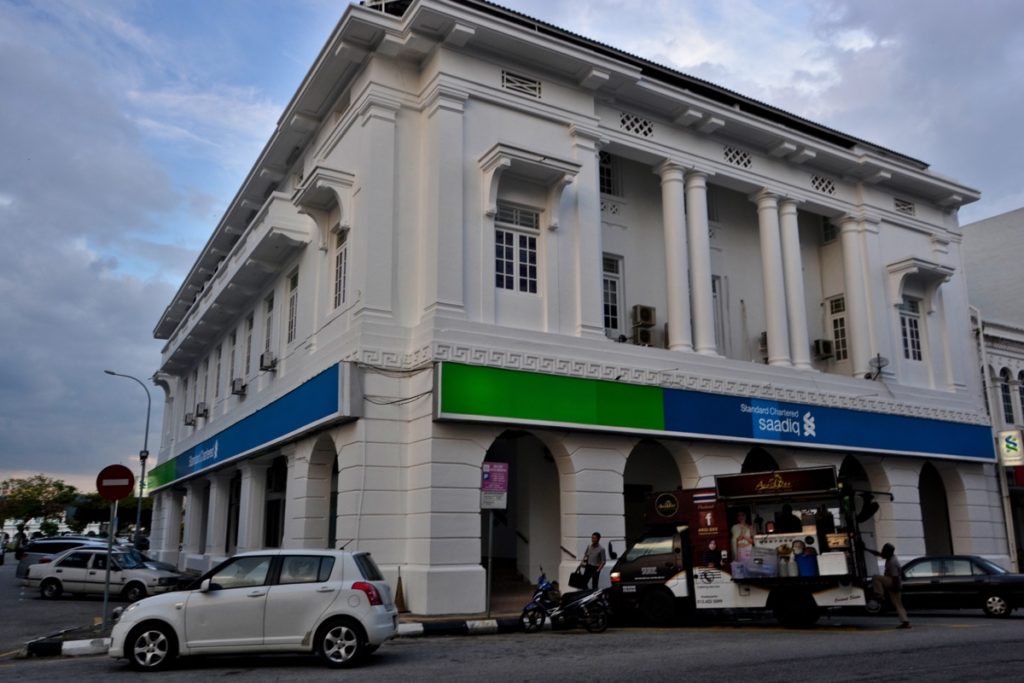
Georgetown / Penang
Next on our route was the UNESCO World Heritage city Georgetown. Georgetown is a living museum where we walked around a full day and could continue for more days to explore all the colonial buildings. You should not miss to visit the houses of the Clans called Kongsi. The houses were established by rich Chinese people with the same family name. Some of the houses are more than 250 years old. The Khoo Kongis we have visited in the street Lebuh Armenian has an impressive museum telling the story of the Chinese immigrants and the roof of the house is with all its colorful decoration awesome.
The major sights are all in a walking distance but in the inner center a free tourist bus is available.
At the riverside old clan houses are located with a beautiful view on to the first Penang bridge with a length of 13.5 km.
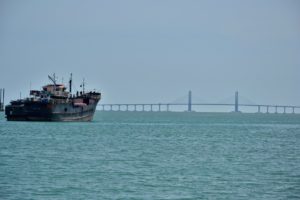
In the so-called Street of Harmony (Jalan Masjid Kapitan Keling) it is visible what makes Malaysia a unique country – buildings from all religions are standing side-by-side: St. George’s church, Chinese goddess of Mercy temple, Hindu Sri Mahamariamman temple, Kapitan Keling mosque and Teochew Chinese Han Jiang temple.
Eastern peninsula Malaysia
Finally, we left the western part of Malaysia. Crossing peninsula Malaysia from West to East the appearance of Malaysia has changed to a dominated Muslim country with even being the street signs also in Arabic. The area Kelantan in North East of Malaysia was until 1909 under Siamese control.
Kota Bharu
We stayed one night in Kota Bharu – the center of Malaysian culture. Beautiful pictures can be taken especially in the market of Pasar Besar. In the lower level, fruits and vegetables are sold and from the 1st floor you have certainly a good view on the market activities.
Around the central place of independence representative buildings like the Muhammadi mosque of 1922 can be found. Go up the prominent tower at the river side to have a perfect overview of the city.
Kuala Terengganu
On our way back to Johor Bahru along the East coast we stopped at Kuala Terengganu. A very beautiful city with colorful shop houses in the street of Chinatown.
Kuala Terengganu has extraordinary mosques where two of them can be found outside of the city. The Crystal mosque made of steel and tinted glass is located on one of the islands. When the river has a high tide, the mosque located on pillars in the river looks like it is floating.
Traditional dishes in Malaysia
Eating in Malaysia is a very spicy experience!! However, it is really worth and an incredible taste. The variety of Malaysia is also visible in the food.
Nasi Lemak
Nasi Lemak is a typical Malaysian breakfast. The white rice is cooked in a thin coconut milk and served with a spicy curry and meat. Additionally, a half egg, salty dried fish, cucumber and roasted peanuts complete the Malaysian breakfast. It is a really delicious dish however, we had it as lunch and not as a spicy and fishy breakfast.
Laksa
Laksa is a famous dish in Singapore and Malaysia. In general, it is a Nyonya noodle soup with different ingredients. Assam Laksa with a fish stock, Penang Laksa with spicy fish paste including coconut milk and Singapore Laksa as a „mild“ alternative with fish cake, cucumber, bean sprouts and fried onions.
Indian food in Malaysia
Restaurants serving Indian food can be found everywhere – but be especially careful about the spiciness.
Steamboat
Fondue exists all over the world with lo cal specialties. We are fans of the Japanese Shabu-Shabu and Chinese Hot Pot so, of course, we wanted to try the Malaysian version: Steamboat with a lot of raw fish.
Our recommendations for Malaysia
Travel guide / Travel book
To identify all these lovely places and Malaysia travel tips we read the following Lonely Planet Travel Book for Malaysia, Singapore and Brunei:
In addition there are two nice books to read about Malaysia, a love story set against the turmoil of mid-twentieth century Malaysia and a compelling story on the captivatingly exotic world of myth and magic:



